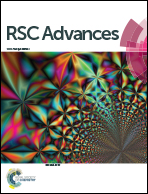Enhancing transparent thin-film transistor device performances by using a Ti-doped GaZnO channel layer
Abstract
This study improved the performances of a thin-film transistor (TFT) device with n-type Ti-doped GaZnO (GTZO) as the channel layer. Various O2/Ar ratios were used during radio-frequency magnetron sputtering deposition to modify the carrier concentration and the thin-film surface flatness. Atomic force microscopy results indicate that the lowest surface roughness (0.38 nm) was observed in the GTZO films fabricated at an O2/Ar ratio of 12/30 sccm. In addition, a room-temperature X-ray diffraction and photoluminescence study verified the improved crystal quality and decreased oxygen vacancies as the O2/Ar ratio increased. The GTZO films fabricated at an O2/Ar gas flow of 6/30 sccm were adopted as the transistor channel layer of a TFT, which exhibited an improved carrier mobility of 16.1 cm2 V−1 s−1, a subthreshold swing of 0.43 V dec−1, an off current of 5.6 × 10−13 A, and an on–off current ratio of 2.2 × 108. From the comparison of transfer characteristic curves for the TFTs with channels of ZnO, indium gallium zinc oxide, and GTZO in this study, the GTZO TFTs exhibit superior characteristics which demonstrated the potential for high-performance optoelectronic device applications.


 Please wait while we load your content...
Please wait while we load your content...